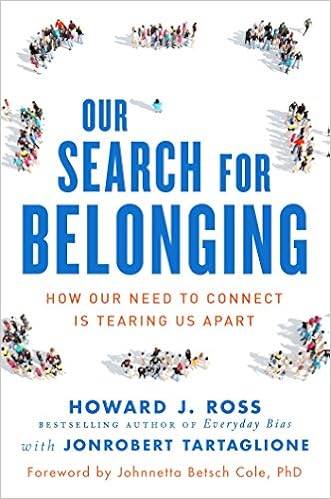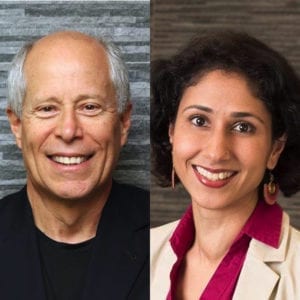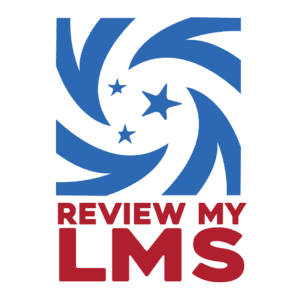Whether or not we are aware of it, each and everyone one of us is biased. It’s actually not always a bad thing and, in fact, it’s a natural function of the human mind. But as learning leaders, if we aren’t in tune with the fact that we are constantly forming biases – and the ways in which they are shaping our thoughts and actions – it’s impossible to ever overcome them.
Howard Ross, founding partner of Cook Ross, is considered one of the world’s leading thinkers on identifying and addressing unconscious bias. He’s also author of Everyday Bias: Identifying and Navigating Unconscious Judgments in Our Daily Lives and Our Search for Belonging: How the Need for Connection is Tearing Our Culture Apart.
And as a learning and development professional with over 17 years of experience in diversity, inclusion, and intercultural learning, Shilpa Alimchandani is the Director of Learning and Innovation at Cook Ross. In her role, she leads the firm’s efforts to co-create learning solutions with its clients.
In this episode of the Leading Learning podcast, Jeff talks with Howard and Shilpa about the concept of unconscious bias including why it’s important, the benefits of bringing awareness to it, and ways to disrupt bias both personally and as facilitators of learning.
To tune in, just click below. To make sure you catch all of the future episodes, be sure to subscribe by RSS or on iTunes. And, if you like the podcast, be sure to give it a tweet!
Listen to the Show
Read the Show Notes
[00:18] – Our sponsor this quarter is ReviewMyLMS, a collaboration between our company, Tagoras, and 100Reviews, the company that is behind the very successful ReviewMyAMS site. As the name suggests, ReviewMyLMS is a site where users can share and access reviews of learning management systems, but in this case, the focus is specifically on systems that are a good fit for learning businesses, meaning organizations that market and sell lifelong learning. Contribute a review and you will get access to all existing and future reviews—there are already more than 120 on the site. And, if you don’t have review to contribute, there is also a subscription option. Just go to reviewmylms.com to get all the details

[01:44] – Highlighted Resource of the Week– a collection of Thought Papers that Cook Ross makes available on its Web site (completely free and don’t require an e-mail address) – they cover a range of topics related to diversity and bias. Among the resources there you will find Howard Ross’ white paper ”Everyday Bias: Further Explorations into How the Unconscious Mind Shapes Our World at Work,” which is a great introduction to the issues he explores in more depth in his book Everyday Bias.
[02:22] – A preview of what will be covered in this podcast where Jeff interviews Howard Ross and Shilpa Alimchandani.
Note that Jeff wrote a blog post that looks at how the bias patterns that Howard identifies in his book can impact learning.
[04:09] – Introduction to Howard and Shilpa.
[05:10] – For listeners who may not be familiar with Cook Ross, could you say a bit more about the focus of your work there?
Howard shares that at Cook Ross they work with organizations to try and create cultures in which people feel included, a sense of belonging, and function at their highest level. They’ve worked with companies all over the world but they all have the same common framework—people work there. The way people interact has a huge impact, not only on the success of the business, but also on the experience that people have working in the business.
Shilpa adds that many of their clients look to them for consulting services on how to improve their cultures and a big part of that is learning.
Unconscious Bias
[06:42] – How and why did unconscious bias emerge to be such an important part of the work?
Howard explains that he’s been doing diversity and inclusion work for almost 35 years and talks about how much it’s changed. They started by looking at dynamics of identity and different psychological models. They were also greatly influenced by Eastern traditions which sees personalities, not as fixed things like in the West, but in reaction to our life experiences. Once that key was unlocked, they realized if people were forming bias based on their life experiences then those are learned patterns of behavior and could maybe be unlearned (as opposed to a fix personality experience).
Howard adds that around that same time, in the mid to late 90’s, early research from the implicit-association test also came out which tests for implicit around unconscious bias. The pivotal next piece was when some of the new neuroscience research started to come out. As consultants, the more they would use some of this new information, people who were previously resistant to this started to find this interesting and wanted more—and then it took off.
[09:43] – Can you give an example or two of what you mean by unconscious bias and how that pervades our lives?
Shilpa shares there are so many examples of unconscious bias that can be simple—like when she has a question related to technology, she almost automatically turns to the youngest member of her team. Then there are examples like what recently happened at Starbucks when two men were actually arrested because an employee felt threatened, which was likely triggered by unconscious bias.
Teaching About Bias
[11:18] – I’m wondering about the challenges you encounter in teaching people about bias. How receptive are people? Are there challenges in making people aware of their bias and ensuring they’re actually going to learn and do something positive with this new consciousness that they have?
Howard first talks about how eye-opening it is when you look at bias and begin to realize how prevalent it is in our lives. He says bias is not fundamentally bad or good, it is simply a function of the mind. The challenge is it can show up in ways that can be harmful – or even fatal – but it can also be helpful when it helps us spot danger.
What they’re trying to do is get people to be more aware of their bias processes so that they can distinguish between the times that it’s helpful and the times when it’s not. Howard admits they can’t make bias go away entirely or even manage it entirely every time because it’s not realistic. But what they can do is help people be more aware of the function and less afraid of it and embrace it more.
[14:20] – What’s the typical process when you’re in a teaching situation, or as you describe it, “co-creating learning”? What are some of the actions/interactions you take people through to make this real and to get them to that point of being able to make better decisions and be more conscious?
Shilpa says there a lot of experiential learning techniques they incorporate in their workshops so that they’re not talking at people or lecturing about bias. Rather, they want their learners to experience something that reveals some of the biases they have and that opens their mind to see what they can do about those and how to make better decisions. Shilpa and Howard talk about some of the exercises they do with people around this and what they reveal.
[17:43] – Besides more fairness and social justice (on a bigger picture scale), what are some of the other big benefits of being more conscious about bias? What’s the big upside of this?
Howard says one of the things they emphasize with clients is that this is a situation where you can do well by doing good. By teaching people how to do this, either way that you emphasize it—if you emphasize it for the best interest of the business, then people benefit relative to fairness—if you emphasize it based on fairness, people benefit relative to the business—so it’s a win-win on both sides.
[19:07] – How can those helping to facilitate/lead learning of any sort help to mitigate some of the bias that attendees might naturally bring into that learning situation that could potentially prevent them from getting everything out of it that they could?
Shilpa points out there all types of expectations people have when they come into a major learning event. They teach a number of techniques to help people slow down, pause, and reflect about what some of those assumptions are. So basically acknowledge, give voice to them, and then let them go.
Howard adds it’s really important that facilitators in this work particularly, have done their homework on the issue. One of the things they emphasize with people when they’re training their own facilitators is to come from a condition of humility—that we’re all in this together. He shares about his own personal experience recently running into Martin Luther King III to illustrate his own bias about a young girl with King who he assumed was his assistant but was actually his chief of staff. So by facilitators sharing their own humanity and blind spots because they can actually invite people into the conversation and make it safer for people to talk about their own biases.
[23:49] – Shilpa also notes that part of what they help their clients understand is that you can build these “pause” moments into systems and processes in your organization. Partly with your own individual, everyday decisions and then when you think about things like the process of interviewing and hiring for example, think about what pause moments look like there as well.
Where is that opportunity to reflect before you go into an interview to dispel some of the assumptions you may have made about the candidate based on their resume? And acknowledge you may be projecting things onto this person based from your own experience that have nothing to do with the candidate or the job. She says our job is to identify those opportunities to build in pause moments to disrupt bias all along the way.
 Our Search For Belonging
Our Search For Belonging
[24:47] – Howard, your recently published book is titled Our Search for Belonging: How the Need for Connection is Tearing Our Culture Apart. Would you tell listeners a little bit about the premise of the book and why belonging has become such a critical issue as kind of an extension of this work around unconscious biases?
Howard shares the actual gestation of the book really came from his own struggles and, in this case, it was spurred by the presidential campaign. He admits he’s always tried to understand things from the other point of view yet he found himself being sucked in to the “them vs. us” stuff in this campaign more than ever before. He became really curious about what it is that has us as human beings become so tribal at times.
Howard says he discovered some new neuroscience and cognitive science research about how the human brain is designed for us to be social animals (this is where JonRobert Tartaglione came in who co-authored the book). What they discovered is the human brain is really wired to belong and it undoubtedly goes back to the early stages of our existence when it was almost impossible for someone to survive alone. For the most part, our human history was built around tribal relationships and out of that, we have the need to feel connected and that we’re part of something.
And when we don’t have that need fulfilled, it actually triggers activity in the same region in the brain associated with physical pain. So when we look at what’s going on in society today, we can see how we’ve gone from a bell-curve society—where most people were in the middle and issue-oriented—to a dumbbell curve where everybody is on the ends and nothing is in the middle. The ultimate premise of the book is that workplaces today may be our last best hope to bridge some of these gaps because workplaces are among the only places anymore where we’re forced to come together with people who are different than us and learn to work and live together.
[30:17] – When you go into a workplace with these new ideas how are you engaging people around the concept of belonging and co-creating that learning with them?
Shilpa points out one of the things they recognize as really important is developing empathy for people who are different than you. Part of tribalism is you have more trust with people who are like you than people who are not like you. She talks about an experiential exercise they do with their learners around empathy called “mindshift” that helps people broaden their perspective and think outside of their own group/tribe.
Howard says one of the things they’re also exploring is using storytelling and narrative sharing because of how powerful it is. He talks about how he sought out people who voted for Trump and realized how much he’d been stereotyping them. He explains how their stories helped build empathy for him and because of that, he says they had incredible conversations that actually lead to potential solutions to things.
[36:11] –I’m coming from an interesting perspective –many, perhaps most, of our listeners work for trade and professional associations – basically groups of people bonding with others like them, at least in a professional sense. What do you see as some of the potential opportunities or challenges for these types of groups, particularly from the standpoint of wanting to move a field or industry forward, promote positive change and growth?
Shilpa talks about some colleagues who recently did some work with a professional association of urban planners. Diversity, equity, inclusion, and bias are not common topics in these professional conferences for this particular group of people. But they were able to help urban planners see how bias impacts the decisions they make in this profession which is shaping our cities and communities all over the country. With so many professions, when you think about the populations/communities/businesses that any of these trade associations serve, bias impacts their decision-making. It also impacts how people access their services and products so we need to look at how we can mitigate bias, no matter what our profession. And by doing this, perhaps we can reach wider markets than we would’ve expected.
Howard says associations are interesting because you have people coming together that represent different entities/organizations and the impact that can have on the unconscious mind.
[40:40]- What is one of the most powerful learning experiences you’ve been involved in, as an adult, since finishing your formal education?
Shilpa shares about an experience working for the US Peace Corps when she visited Rwanda and did diversity training where you weren’t allowed to talk about ethnicity and there was also a language barrier. She talks about how memorable and impactful that experience was, both as a facilitator, and as a learner.
Howard shares about his experience when he spent the year as Professor of Diversity in Residence at Bennett College for women (a historically black college) and how and why it was an incredibly rich learning experience.
[46:59] – How to learn more about Cook Ross and/or Howard’s books:
- Website: https://cookross.com
- Email: lookingforanswers@cookross.com
[47:28] – Wrap Up
If you are getting value from the Leading Learning podcast, be sure to subscribe by RSS or on iTunes. We’d also appreciate if you give us a rating on iTunes by going to https://www.leadinglearning.com/itunes.
And we’d be grateful if you would take a minute to visit our sponsor for this quarter, ReviewMyLMS and, if you can, contribute a review to help others find the right platform for their needs.
Also, consider telling others about the podcast. Go to https://www.leadinglearning.com/share to share information about the podcast via Twitter, or send out a message on another channel of your choosing with a link to https://www.leadinglearning.com/podcast.
[49:19] – Sign off
See Also:




Leave a Reply